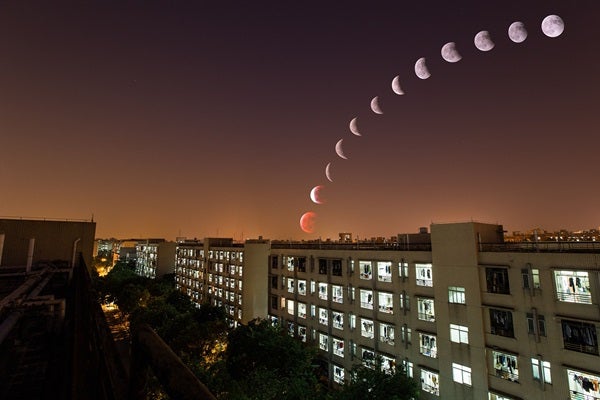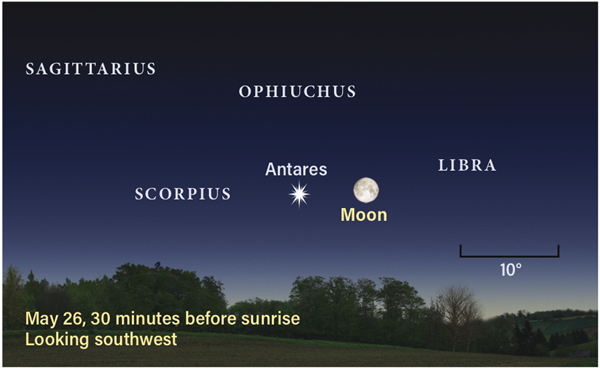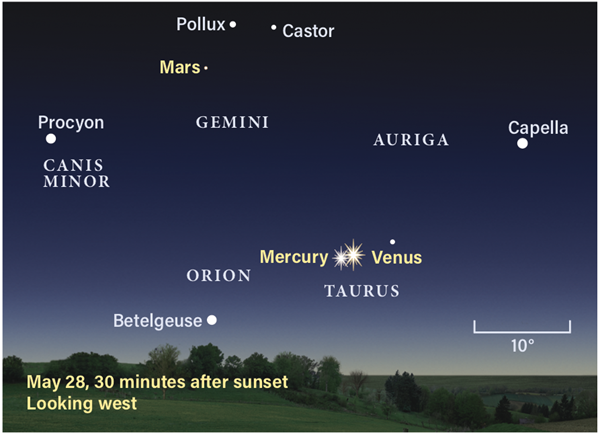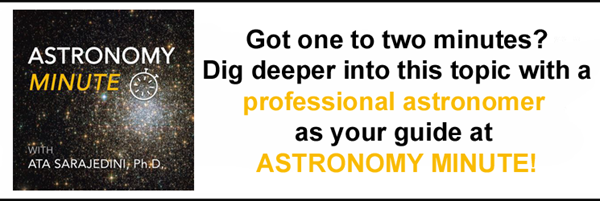Friday, May 21
Rising relatively late (around 10 P.M. local time) is a taste of the summer sky: Cygnus the Swan. The celestial bird-in-flight’s tail, magnitude 1.3 Deneb, is one point of the famous Summer Triangle that rides high overhead during the Northern Hemisphere’s warmest season. But tonight, let’s focus in on the other end of the constellation and take a closer look at Cygnus’ head, marked by magnitude 3 Albireo.
Although it appears as a single sun to the naked eye, Albireo is a famous double star separated by 34″, easy to split at low power through a small telescope. Its components are such a brilliant sight because they are distinctly different colors: blue and gold. These contrasting colors arise from the stars’ different temperatures — hotter stars are bluer, while cooler stars appear orange or red.
Although astronomers long believed the pair might be part of the same star system, more recent measurements from the European Space Agency’s Gaia mission indicate that Albireo’s two stars are not actually associated with each other. That makes Albireo a visual binary, rather than a true binary system.
Sunrise: 5:40 A.M.
Sunset: 8:14 P.M.
Moonrise: 2:37 P.M.
Moonset: 3:03 A.M.
Moon Phase: Waxing gibbous (70%)
*Times for sunrise, sunset, moonrise, and moonset are given in local time from 40° N 90° W. The Moon’s illumination is given at 12 P.M. local time from the same location.
Saturday, May 22
Have you ever wondered what it takes to run a facility like the Very Large Array (VLA)? Now’s your chance to find out: The VLA is hosting an hour-long free virtual tour starting at 1 P.M. MDT today. The tour will take you behind the scenes of this amazing array to learn more about how staff operate and maintain the site. Advance registration is required; you can sign up here.
Now that the waxing Moon has left the area, you can pick up asteroids 4 Vesta and 29 Amphitrite again, both in Leo the Lion this evening. Let’s start with the easier magnitude 7.5 Vesta, located 3.3° due west of magnitude 3 Chertan in the Lion’s haunches. To further help with your search, the asteroid also currently sits 19′ due east of a magnitude 8 field star, HIP 53710. You should be able to easily pick up Vesta with binoculars, although you won’t see its motion over the course of a single night. Instead, return to this region for a few nights in a row to pick up its movement, which should become readily apparent after about three days.
Amphitrite is fainter — around magnitude 10 — but can still be seen with larger binoculars or a small scope. It recently passed by Regulus, the Lion’s heart, and is now about 2° east-southeast of the bright luminary. You can pick it up just 25′ northeast of magnitude 8 HIP 50110, another field star.
Sunrise: 5:39 A.M.
Sunset: 8:15 P.M.
Moonrise: 5:49 P.M.
Moonset: 3:31 A.M.
Moon Phase: Waxing gibbous (80%)
Sunday, May 23
Rising after Cygnus this evening is a dim constellation you might not be familiar with: Lacerta the Lizard. You can find it south of Cepheus the King and about 20° to the east of Deneb in neighboring Cygnus the Swan.
This small star figure contains a diamond-shaped head that includes both its alpha and beta stars, which are magnitude 3.8 and 4.4, respectively. The tip of its tail is 4th-magnitude 1 Lacertae. Although Lacerta has no Messier objects, it is home to magnitude 6.4 NGC 7243, an open cluster about 2.6° west of Alpha (α) Lacertae. The Lizard also contains the famous active galaxy BL Lacertae. This highly variable object is actually the bright disk of material swirling around a supermassive black hole deep within the galaxy’s center. The disk flares and dims as the material within it moves, changes, and even disappears into the black hole. Although BL Lac is faint (it ranges from magnitude 14 to 17), experienced observers with large amateur scopes or good astrophotography skills can capture it.
Saturn is stationary at 4 P.M. EDT, ending its motion southeastward toward Theta [θ] Capricorni and swinging around to move southwest, away from the star. We’ll take a look at the ringed planet in another few days.
Sunrise: 5:38 A.M.
Sunset: 8:16 P.M.
Moonrise: 5:03 P.M.
Moonset: 3:59 A.M.
Moon Phase: Waxing gibbous (89%)
Monday, May 24
The wee hours of the morning are the perfect time to peer toward the center of our Milky Way, located in the constellation Sagittarius. Look south to identify the Teapot asterism, which appears upright with its spout facing west around 1 A.M. local time. It’s made up of several stars: Zeta (ζ), Tau (τ), Sigma (σ), and Phi (ϕ) Sagittarii form the handle; Phi, Lambda (λ), and Delta (δ) Sagittarii form the top; Delta, Gamma (γ), and Epsilon (ϵ) Sagittarii form the spout; and Epsilon, Zeta, Phi, and Delta create the body.
Farther west (to the Teapot’s right) is Scorpius the Scorpion, whose long tail curves toward the horizon. This region is home to numerous open and globular star clusters, although they’ll be a bit challenging to survey this morning, thanks to the low altitude and waxing Moon nearby in Virgo. But even with our satellite’s bright light saturating the sky, you should still easily spot the constellation’s brightest star, magnitude 1 Antares, glowing a deep orange-red.
Sunrise: 5:38 A.M.
Sunset: 8:17 P.M.
Moonrise: 6:19 P.M.
Moonset: 4:28 A.M.
Moon Phase: Waxing gibbous (95%)
Tuesday, May 25
Saturn’s moon Iapetus reaches greatest eastern elongation today. You can find it 8.3′ east of Saturn, which sits 40′ from Theta Capricorni this morning. The ringed planet glows a bit fainter than 1st magnitude and is easily visible to the naked eye; to spot its moons, however, you’ll want a small telescope. Iapetus is currently around magnitude 12; if that’s too challenging, 10th-magnitude Tethys, Rhea, and Dione lie closer to the rings, while magnitude 8.4 Titan, Saturn’s largest moon, sits a bit less than 2′ west-southwest of the planet.
Nearby in Aquarius, Jupiter’s moons are also putting on a show. Around 4:30 A.M. EDT, Io’s shadow slips onto the eastern edge of Jupiter’s disk. The moon itself sits farther east, while Ganymede is roughly equidistant to the planet’s west. Io follows its shadow onto the planet around 5:50 A.M. EDT — after sunrise on the U.S. East Coast, but within twilight for the rest of the country. Follow Io’s trek as long as you can, taking care to stop observing before sunrise by setting an alarm to go off at least several minutes before the Sun is scheduled to peek above the horizon.
The Moon reaches perigee, the closest point in its orbit around Earth to our planet, at 9:50 P.M. EDT tonight. At that time, it will sit a mere 222,023 miles (357,311 kilometers) away.
Sunrise: 5:37 A.M.
Sunset: 8:18 P.M.
Moonrise: 7:39 P.M.
Moonset: 5:02 A.M.
Moon Phase: Waxing gibbous (99%)
Wednesday, May 26
Wednesday morning kicks off with a lunar eclipse, portions of which are visible from the central and western U.S. The partial eclipse begins as the Moon enters the darkest portion of Earth’s shadow at 4:44 A.M. CDT, just as our satellite is roughly 10° above the horizon, amid the stars of Scorpius. Totality will begin at 6:11 CDT and last for 14 minutes; however, the Moon is setting or has already set for much of the Midwest, so only observers farther west will get to see the sight.
In the Pacific time zone, totality ends at 4:25 A.M. and the partial phase ends at 5:52 A.M.; by then, the Moon has set for most locations. Totality is so short because the Moon is just skimming the northern part of Earth’s shadow. Although total lunar eclipses are typically called Blood Moons, our satellite will likely turn more orange than red, thanks to this shallow path through the shadow.
Want to learn more about the lunar eclipse? Check out our special observing article on May’s Blood Moon!
Full Moon officially occurs at 7:14 A.M. EDT. May’s Full Moon is called the Flower Moon; this Full Moon is also a Super Moon, which occurs while the Moon is at or close to perigee (which it reached last night). You may recall that April’s Full Moon was also a Super Moon, but May’s Full Moon is 0.04 percent bigger, thanks to its slightly closer proximity. Those who couldn’t catch the eclipse or simply wanted to sleep in can instead enjoy our satellite as it rises this evening, still 99 percent illuminated.
Sunrise: 5:36 A.M.
Sunset: 8:18 P.M.
Moonrise: 8:58 P.M.
Moonset: 5:42 A.M.
Moon Phase: Full
Thursday, May 27
About an hour before sunrise, distant Uranus has cleared the horizon. It’s floating 11.2° below Aries’ brightest star, Hamal. The magnitude 5.9 planet is tricky to spot, and you’ll definitely want binoculars or a telescope to search it out.
You can also find our solar system’s other ice giant, Neptune, higher in the sky at the same time. Neptune sits at the edge of nearby Aquarius, where bright, naked-eye Jupiter dominates. To locate magnitude 7.8 Neptune, swing your gaze 5.5° east of magnitude 4.2 Phi (ϕ) Aquarii or, alternatively, use magnitude 4.5 Lambda Piscium in Pisces as a signpost. Neptune sits 6° to this star’s south-southwest.
Again, take care when observing this close to sunrise and stop using any optics before the Sun itself clears the horizon.
Sunrise: 5:36 A.M.
Sunset: 8:19 P.M.
Moonrise: 10:12 P.M.
Moonset: 6:29 A.M.
Moon Phase: Waning gibbous (98%)
Friday, May 28
Mercury and Venus have spent all month racing across Taurus the Bull. The two planets come closest to each other — within 24′ — this evening. The pair is visible for about an hour after sunset and any telescope or pair of binoculars that can fit the entire Full Moon in its view (about 30′) will let you see both planets at once.
Mercury, glowing a faint magnitude 1.9, spans about 11″ and is 12 percent lit. Venus, meanwhile, is nearly full in phase but spans 10″ due to its greater distance from our planet. It’s a brilliant magnitude –3.9, though, easily visible to the naked eye (although you may struggle to spot Mercury unaided in the still-bright sky).
There’s a third member in this planetary tableau, albeit one constellation away in Gemini: Mars is magnitude 1.7 — comparable to Mercury, but it starts out the evening a bit higher in the sky and will pop out more as darkness falls and remain visible longer. You’ll find the Red Planet, currently a mere 4″ across, 2.8° directly below magnitude 3.6 Kappa (κ) Geminorum and 5.5° to the lower left of brighter magnitude 1.2 Pollux.
Sunrise: 5:35 A.M.
Sunset: 8:20 P.M.
Moonrise: 11:18 P.M.
Moonset: 7:27 A.M.
Moon Phase: Waning gibbous (93%)














